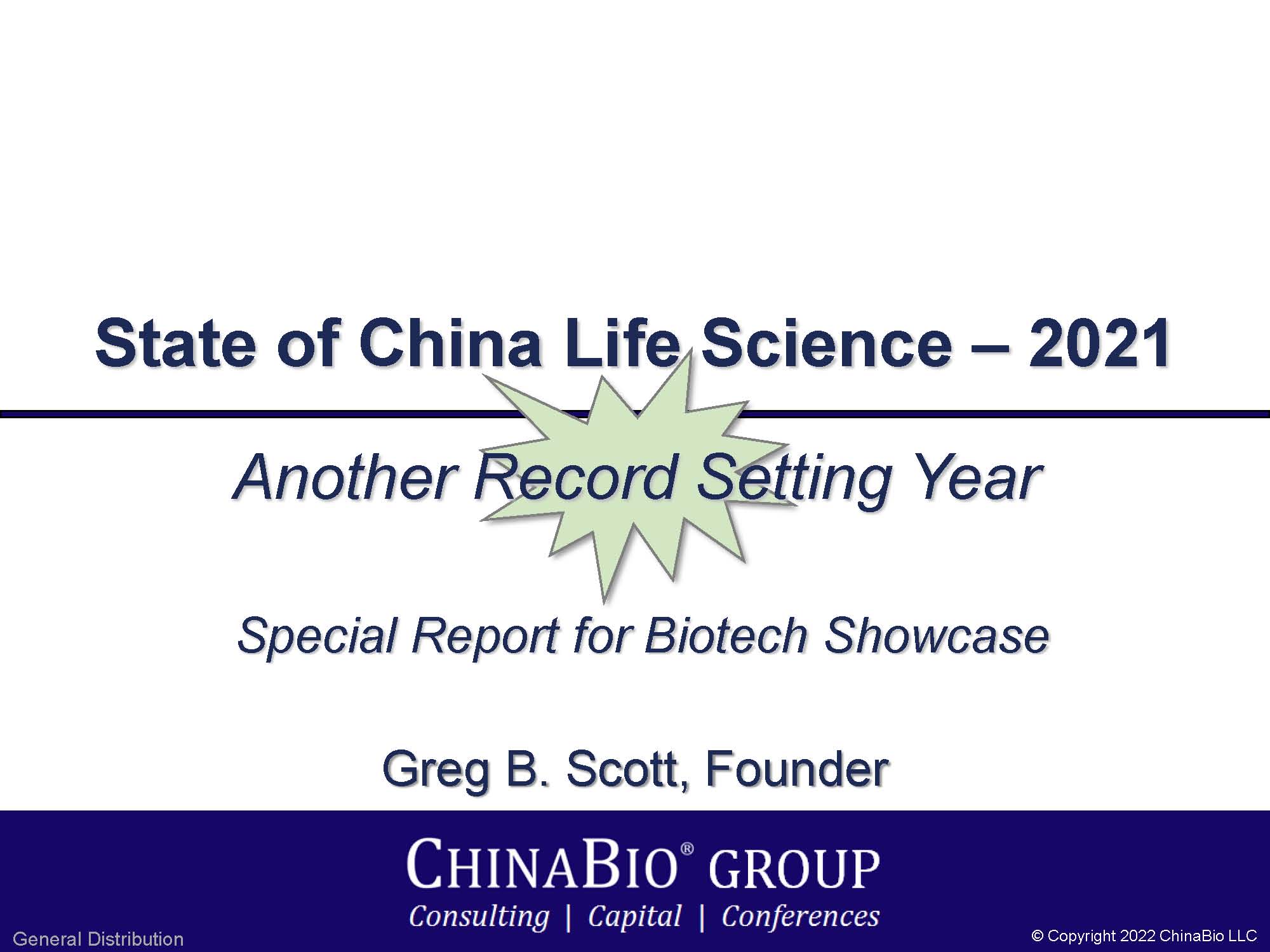Did you know?
ChinaBio® Group is a consulting and advisory firm helping life science companies and investors achieve success in China. ChinaBio works with U.S., European and APAC companies and investors seeking partnerships, acquisitions, novel technologies and funding in China.
Free Newsletter
Have the latest stories on China's life science industry delivered to your inbox daily or weekly - free!
Free Report
Hong Kong's Pre-Revenue China Biotech IPOs: A Tale of Two Markets
Just over one year ago, the Hong Kong Stock Exchange announced its brand new IPO pathway for "pre-revenue" China biopharmas. Since then, seven biopharmas have completed IPOs under the new rules, and the results tell a tale of two quite different markets: the first three lost money for their IPO investors while the last four generated very attractive returns -- three of the last four are now more than 65% higher than their IPO prices. it isn't really two different markets; it only seems that way. [Editor's Note: A panel on Capital Markets at the ChinaBio Partnering Forum in Shanghai on May 8-9 will feature some of these companies as panelists.]
|
First Year HKEX Biotech Stock Performance |
|||||
|
Company / Stock |
Issue Date |
Issue Price |
Closing Price |
Price Change |
Cumulative |
|
Ascletis (1672) |
8/1/2018 |
HK$14.00 |
HK$6.68 |
0.0% |
-52.0% |
|
BeiGene (6160) |
8/8/2018 |
HK$107.94 |
HK$76.15 |
-0.9% |
-29.5% |
|
Hua Medicine (2552) |
9/14/2018 |
HK$8.28 |
HK$7.05 |
0.0% |
-14.9% |
|
Innovent (1801) |
10/31/2018 |
HK$13.98 |
HK$25.05 |
18.6% |
79.4% |
|
Junshi Biosciences (1877) |
12/24/2018 |
HK$19.38 |
HK$32.00 |
22.6% |
65.1% |
|
CStone (2616) |
2/26/2019 |
HK$12.00 |
HK$13.74 |
7.2% |
14.8% |
|
CanSino Biologics (6185) |
3/28/2019 |
HK$22.00 |
HK$38.80 |
57.7% |
76.4% |
|
Average Change: |
|
|
|
15.0% |
19.9% |
|
* Closing price after first year of HKEX activity |
|
|
|
|
|
Unfortunately, the post-IPO stock performance of the first three cast a shadow over this new IPO pathway. Each new biotech IPO, as it approaches its listing, faces greater skepticism because of the disappointing performance of the first three.
There is a consensus among observers about what happened. At the outset, the Hong Kong IPO pathway enjoyed considerable hype. Companies floated inflated valuations about their not-yet-profitable operations, and few words of caution were heard. Nevertheless, when post-IPO investors did not support these valuations, the stocks fell.
The Hong Kong Exchange and the investment bankers took action. After the first three IPO transactions, underwriters forced the companies to rein in their valuations, upping the chance that IPO investors would see profits.
Innovent, which priced its IPO at the end of October, almost three months after Ascletis' August 1 debut, was the fourth China biopharma up for a HK IPO. It needed to provide a turnaround.
Innovent itself is a very strong, well-known company, with a spectacular $1 billion partnership with Lilly, a large portfolio of biotech candidates, including near-market novel and biosimilar cancer drugs, along with backing from Temasek. It is a force to be reckoned with.
To create a positive IPO transaction, the Hong Kong Exchange, the company's bankers, and Innovent itself, staged a conservative, well-planned event.
The company's valuation, for example, which was estimated to be $3.8 billion at a "fair" value during the road show, was reduced to $2.1 billion for the IPO. Fully 58% of the shares were bought by 10 cornerstone investors (who cannot sell for a specified period of time), and Temasek took down another $20 million of the IPO.
Then, with a valuation of $2.1 billion at the top of the HK$12.50–$14.00 IPO range, and a lot of orders in the book, Innovent knocked off another two cents to price the offering at HK$13.98.
About 90% of the shares were allocated to long-only funds and healthcare specialists, while 8% went to hedge funds and 2% to others. Altogether, the non-cornerstone tranche was more than 10 times covered by bids.
The caution paid off. Innovent moved up 18.6% on the first day, and it now leads the entire pack of Hong Kong IPO'd biopharmas with a 79.4% increase. The company pulled in $400 million at a $2 billion valuation.
After Innovent, there were three more positive IPOs: Junshi is up 65.1%; CStone is up 14.8%; and vaccine maker CanSino is 76.4% higher (after a best-in-class 57.7% climb in its first trading session).
This means the woe-begotten start to the Hong Kong pre-revenue IPO track is now a thing of the past. All together, the first seven IPOs, including the negative ones, averaged a 19.9% return. The last four averaged a positive 59% increase. And this happened during a year-long stretch when the market for China biopharma stocks was declining, not during a market fueled by an upsurge in optimism.
Now, with the Hong Kong market having found its balance, it faces a challenge from the Shanghai Exchange. In the second half of 2019, Shanghai's new Technology Innovation Board will allow still-unprofitable hi-tech companies - including biopharmas - to IPO on the exchange. Each company must have a valuation of at least $600 million to qualify and comply with other stipulations as well. For China biopharmas, the new Technology Board means they will have a choice of where to list.
Disclosure: none.
ChinaBio® News

Greg Scott Interviewed at BIO-Europe Spring
How to bring your China assets to China in 8 minutes

"Mr. Bio in China."
Mendelspod Interview
Multinational pharma held to a higher standard in China





